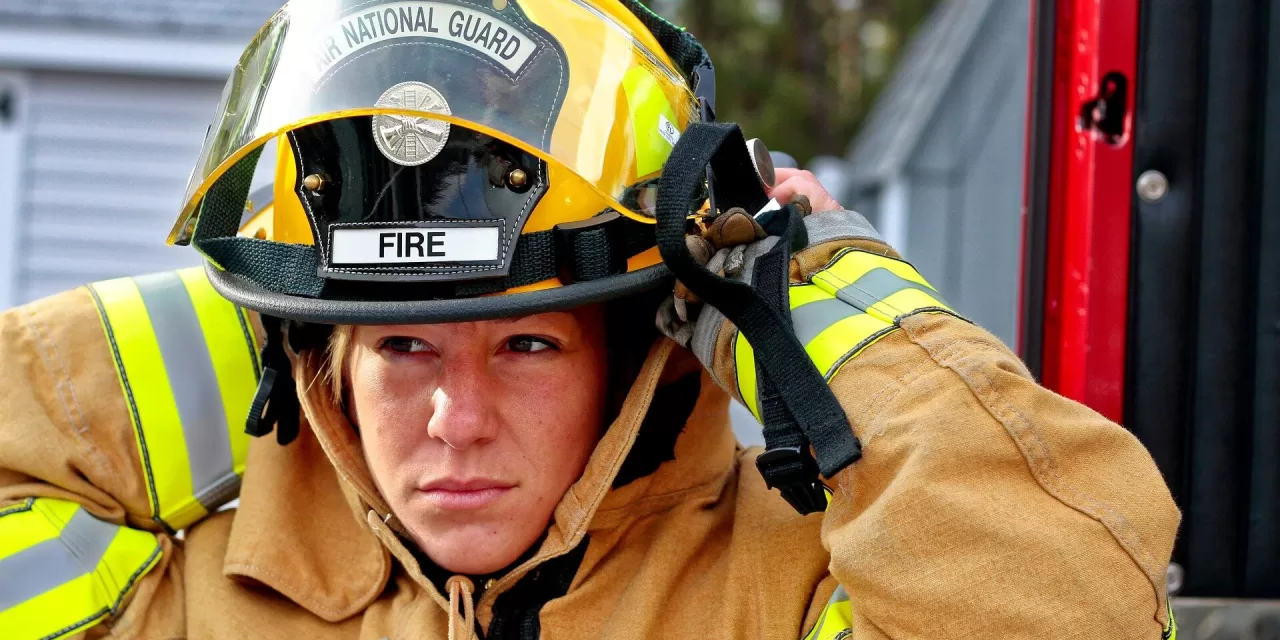A groundbreaking new study by the Silent Spring Institute has raised alarming concerns about the risks of breast cancer among female firefighters, uncovering a troubling link between occupational chemical exposures and cancer development. While it has long been established that firefighters face a significantly higher risk of various cancers due to their work environment, most research has focused on male firefighters, leaving a critical gap in understanding the risks faced by women in the profession.
Published in the journal Toxics as part of a special issue on occupational health hazards for firefighters, the study identifies more than a dozen chemicals that are commonly found in the environments where firefighters work. These chemicals, many of which are known or suspected carcinogens, are linked to an increased risk of breast cancer in women.
“With more and more women entering the firefighting profession, it’s essential to understand how these workplace exposures impact their health,” said Ruthann Rudel, director of research at Silent Spring Institute and co-author of the study. “Our research aims to inform policies that can reduce these exposures and create a safer work environment for female firefighters.”
The study’s findings were based on an extensive review of scientific databases, including the International Agency for Research on Cancer (IARC) and the U.S. National Toxicology Program, to identify chemicals known to cause mammary tumors in animals, as well as those linked to breast cancer in human studies. Rudel and her colleagues then screened more than 100 studies of firefighter exposures to pinpoint chemicals that pose the greatest risk for breast cancer.
The analysis revealed a troubling list of 12 chemicals or chemical classes that female firefighters are commonly exposed to, including benzene, polycyclic aromatic hydrocarbons (PAHs), acetaldehyde, styrene, dioxins, flame retardants, per- and polyfluoroalkyl substances (PFAS), and polychlorinated biphenyls (PCBs). These chemicals are present in a range of firefighting activities, including battling building fires, wildfires, and vehicle fires, as well as in the protective gear, air, and dust at fire stations, and even in the diesel exhaust from fire trucks.
“Firefighters are exposed to a cocktail of toxic chemicals during their daily duties,” said Rudel. “And while some of these exposures are well-known, others, like flame retardants in turnout gear and PFAS in firefighting foams, have been largely overlooked.”
The study’s findings echo previous research that has shown elevated levels of cancer-causing chemicals in the bodies of female firefighters. In a separate study conducted in California, Rudel and her team found that female firefighters in San Francisco had higher blood levels of PFAS and flame retardants compared to women working in office environments.
“PFAS and flame retardants are added to firefighter gear and equipment to provide protection, but they come with their own set of health risks,” said Rudel. “If these chemicals are contributing to the elevated cancer risks for female firefighters, replacing them with safer alternatives could make a significant difference.”
The study also highlights the potential benefits of transitioning to electric fire trucks, as diesel exhaust from traditional trucks contains PAHs, which are known carcinogens. Switching to electric vehicles could reduce exposure to these harmful substances.
Understanding the unique risks female firefighters face is critical not only for shaping policies to protect their health but also for ensuring they receive the appropriate medical care and support if diagnosed with breast cancer. While 20 U.S. states currently have laws recognizing breast cancer as an occupational illness for firefighters, Rudel notes that many states still lack protections for female firefighters.
“This study is a wake-up call,” said Dr. Dan Whu, Chief Medical Officer at the International Association of Fire Fighters (IAFF). “It underscores the need for greater recognition of the unique health risks female firefighters face, as well as policies to mitigate these risks.”
Currently, 20 states have “presumptive laws” that designate breast cancer as an occupational illness for firefighters, enabling them to access workers’ compensation and other benefits. However, federal legislation does not yet include breast cancer under its cancer presumptive laws, leaving many female firefighters unprotected.
“Hopefully, our study will help prompt changes in legislation to ensure female firefighters have the protections they need,” Rudel said.
The findings of this study offer a crucial opportunity to reassess the safety of firefighting equipment and policies, with the ultimate goal of safeguarding the health of all firefighters, especially women who have historically been underrepresented in research on the occupational hazards of the profession.
For more details, refer to the study by Bethsaida Cardona et al, Breast Cancer-Related Chemical Exposures in Firefighters, published in Toxics (2024). DOI: 10.3390/toxics12100707.












